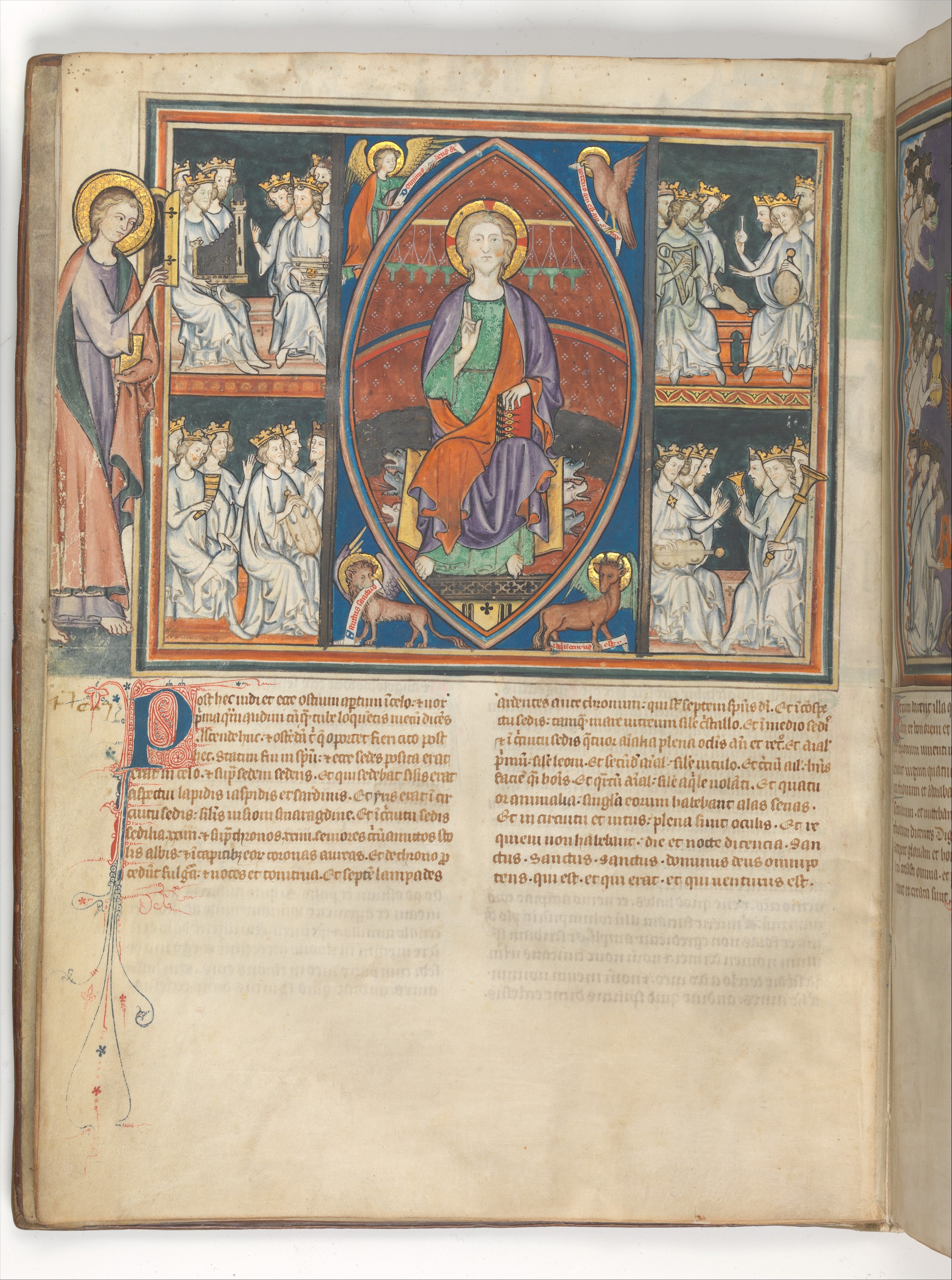Welcome to 31 Days of Medieval Manuscripts, a month-long series introducing the fascinating and brilliant world of medieval illuminated manuscripts.

I’m just going to carry on with this Halloween theme. Apocalypse manuscripts contain St. John the Divine’s writings in the Book of Revelation, including supposed details about the end of the world. Remember that the saved and the damned are supposed to have very different experiences in the end, so Apocalypse manuscripts frequently have some pretty extreme contrasts in their imagery.

Illustrations range from beautiful to horrifying to just bizarre. For example, the caption attached to the image shown above was “The Dragon Giving the Sceptor of Power to the Beast from the Sea“. I can’t even pretend to understand what that means, though I noticed from looking at the rest of the manuscript that these beasts seem to create an awful lot of havoc. Many apocalypses also contain other Biblical imagery, such as St. George fighting the dragon and the adoration of the Magi. I haven’t included any of those images here because they’re relatively similar to things we’ve already looked at before.
 Souls being judged in Queen Mary’s Apocalypse. England, early 14th century. British Library (Royal 19 B XV f. 11).
Souls being judged in Queen Mary’s Apocalypse. England, early 14th century. British Library (Royal 19 B XV f. 11).
For more about Apocalypse manuscripts, read this excellent post on the British Library’s blog and Nancy Ross’s Apocalypse Project.1 I’ve written about Apocalypse imagery before, but that article would spoil tomorrow’s post, so you’ll have to wait to receive that particular link.

- Unfortunately, the second resource I originally recommended seems to no longer exist on the internet. However, Professor Ross does have a lecture about the Gulbenkian Apocalypse manuscript on YouTube. ↩︎

